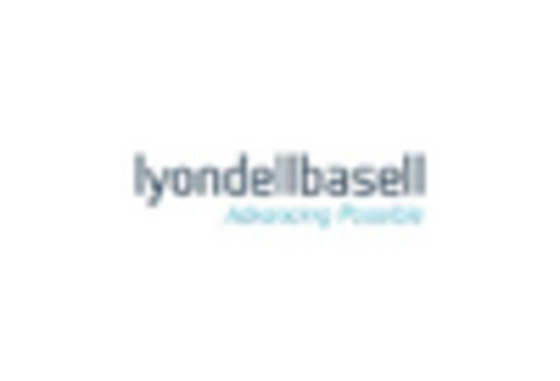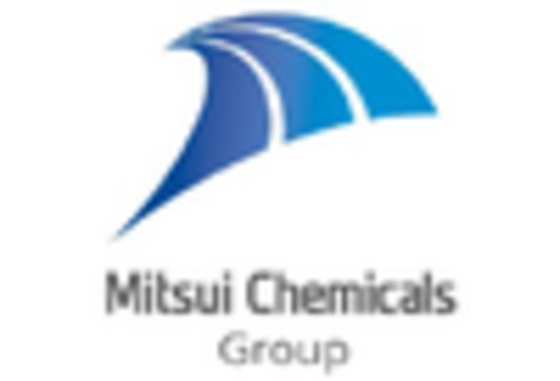Growth in Footwear Industry
The Ethylene Vinyl Acetate Resins Market is significantly influenced by the expanding footwear sector. Ethylene vinyl acetate is widely utilized in the production of shoe soles and insoles due to its lightweight nature and cushioning properties. In recent years, the footwear industry has seen a shift towards more comfortable and performance-oriented designs, which has led to an increased adoption of EVA materials. As of 2025, the footwear segment is expected to represent a considerable portion of the overall market, driven by rising consumer demand for athletic and casual footwear. Additionally, the trend towards customization in footwear design is likely to further propel the use of ethylene vinyl acetate resins, as manufacturers seek to create unique and tailored products that cater to individual preferences.
Increased Use in Medical Applications
The Ethylene Vinyl Acetate Resins Market is benefiting from the increased use of EVA in medical applications. The material's biocompatibility and flexibility make it suitable for a range of medical devices, including drug delivery systems and packaging for medical supplies. As healthcare continues to evolve, the demand for high-quality, reliable materials is paramount. In 2025, the medical segment is expected to grow significantly, driven by advancements in healthcare technology and the need for innovative solutions. The ability of ethylene vinyl acetate resins to be sterilized and their resistance to chemicals further enhance their appeal in the medical field. As the industry adapts to changing healthcare needs, the role of EVA resins is likely to expand, contributing to the overall growth of the market.
Advancements in Automotive Applications
The Ethylene Vinyl Acetate Resins Market is poised for growth due to advancements in automotive applications. The automotive sector increasingly incorporates ethylene vinyl acetate resins in various components, including interior trims, seals, and adhesives, owing to their superior performance characteristics. In 2025, the automotive segment is anticipated to witness a significant uptick, driven by the industry's focus on lightweight materials to enhance fuel efficiency and reduce emissions. Furthermore, the versatility of EVA resins allows for their use in electric vehicles, where lightweight and durable materials are essential. As automotive manufacturers continue to innovate and prioritize sustainability, the demand for ethylene vinyl acetate resins is likely to rise, positioning the industry for robust growth.
Rising Demand in Packaging Applications
The Ethylene Vinyl Acetate Resins Market is experiencing a notable surge in demand, particularly within the packaging sector. This increase is largely attributed to the material's excellent clarity, flexibility, and resistance to UV radiation, making it an ideal choice for various packaging solutions. In 2025, the packaging segment is projected to account for a substantial share of the market, driven by the growing need for lightweight and durable materials. Furthermore, the shift towards sustainable packaging solutions is likely to enhance the appeal of ethylene vinyl acetate resins, as they can be formulated to meet eco-friendly standards. As consumer preferences evolve, manufacturers are increasingly adopting these resins to create innovative packaging designs that not only protect products but also enhance their visual appeal.
Emerging Trends in Construction Materials
The Ethylene Vinyl Acetate Resins Market is witnessing emerging trends in construction materials, where EVA resins are increasingly utilized for their adhesive properties and flexibility. The construction sector is evolving, with a growing emphasis on energy-efficient and sustainable building practices. In 2025, the demand for ethylene vinyl acetate resins in construction applications is projected to rise, driven by the need for high-performance adhesives and sealants. The material's ability to withstand environmental stressors while maintaining structural integrity makes it a preferred choice among builders and contractors. Additionally, the trend towards modular construction and prefabricated components is likely to further enhance the use of EVA resins, as they provide the necessary bonding strength and flexibility required in modern construction projects.


















Leave a Comment